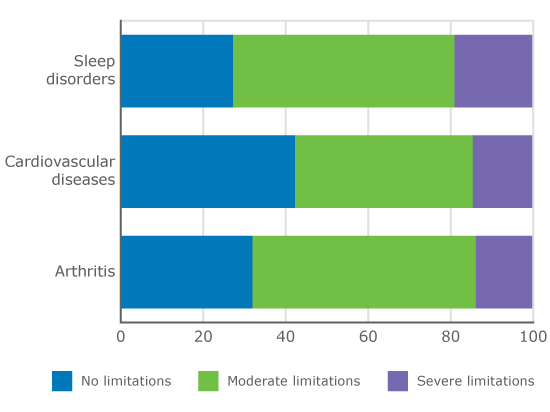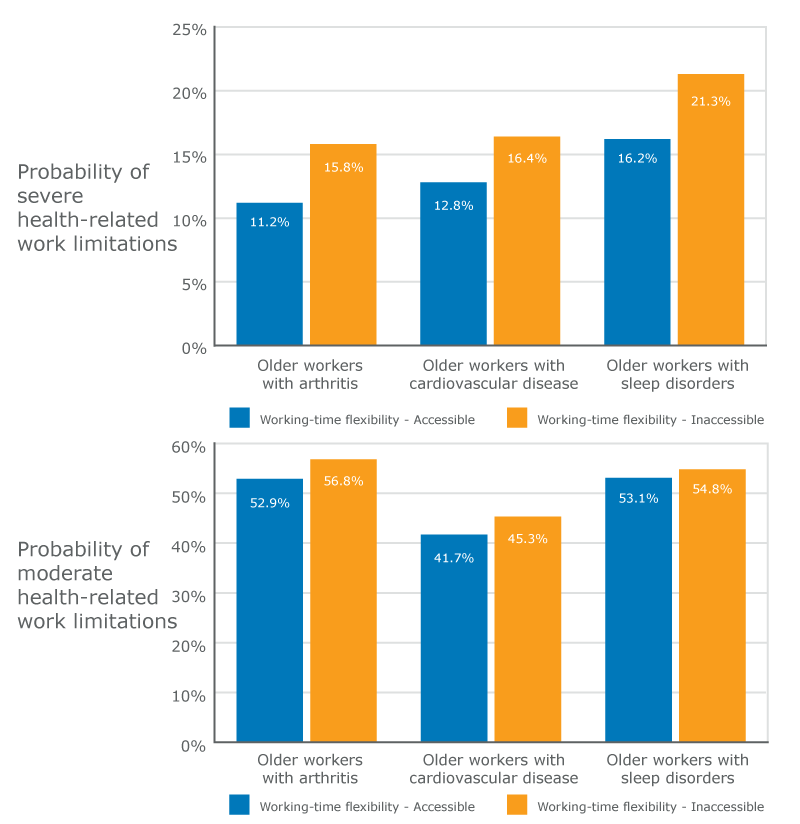Ageing is associated with a general decline in physical and mental health, as well as a high probability of experiencing one or more chronic health conditions. Despite this, new public pension policies in the western world require older workers to work into old age. This inflicts a double burden on older workers: They have to work longer than they previously expected while simultaneously managing the difficulties posed by their chronic health conditions.
In this context, a new study published in ‘The Gerontologist’, Anushiya Vanajan (Netherlands Interdisciplinary Demographic Institute (NIDI), University Medical Center Groningen, University of Groningen (UMCG)), Ute Bultmann (UMCG), and Kene Henkens (NIDI, UMCG and University of Amsterdam), questioned how to maintain older workers’ physical ability to work. They first examined the extent of work limitations experienced by older workers suffering from three highly prevalent chronic health conditions – arthritis, cardiovascular diseases and sleep disorders. Thereupon they studied the effectiveness of three flexible work arrangements – working time flexibility, work place flexibility and phased retirement – in reducing the work limitations of older workers. To do this, they used data from the first wave of the NIDI Pension Panel Survey, which was a large, multilevel panel study conducted in 2015 in the Netherlands. The analysis was conducted using a total sample of 5,419 older workers, aged between 60-65 years working in 624 organisations (see Henkens et al., 2017).
From the respondents, a significant proportion suffered from arthritis (43%), cardiovascular diseases (13%) and sleep disorders (15%). It was quite intriguing to see that in each of these groups, a majority of older workers suffered from moderate to severe work limitations as a result of their respective chronic health condition (see Figure 1).

Figure 1: Perceived health-related work limitations of older workers with arthritis (N = 2,330), cardiovascular disease (N = 720) and sleep disorders (N = 816).
This means that a substantial number of older workers are limited in their daily work due to arthritis, cardiovascular diseases and sleep disorders. If policy makers and organisations expect older workers to work longer, they should provide older workers with flexible work arrangements that are verified to lower health-related work limitations.
This study compared the associations between three flexible work arrangements – working time flexibility, work place flexibility and phased retirement – and severe health-related work limitations among older workers. The results showed that working time flexibility was associated with fewer health-related work limitations among older workers with arthritis, cardiovascular disease and sleep disorders, while the other two flexible work arrangements were not. This result is further described in Figure 2: Older workers experiencing the three chronic health conditions who could work flexible hours experienced a lesser amount of severe work limitations, than their counterparts who were not able to work flexible hours.

Figure 2: Illustration of the effects of perceived access to working-time flexibility on the probability of experiencing moderate and severe health-related work limitations among older workers with arthritis (N = 2,330), cardiovascular disease (N = 720), and sleep disorders (N = 816). Predicted values were calculated based on observable data with all variables at their mean value
This result may seem perplexing – Why is working from home or working less before retirement not as beneficial as having flexible hours? The authors explain that this could be because flexibility in working hours may give older workers autonomy to make decision on how to structure their day around their work, disease symptoms, and health-related limitations and demands (such as doctor’s visits). Working from home requires one to work during specific work hours, while also taking away the highly beneficial social contact that workplaces provide. While phased retirement may allow one to reduce their working hours until retirement, it also comes with a significant reduction in earnings, which will negatively impact pension benefits. All in all, flexibility in working time seems to be the popular choice among older workers experiencing chronic health conditions. Providing older workers with access to flexible working time may not only improve their employability and the quality of their working lives, but it might also encourage them to extend their working lives.